What toy are you going to give your parrot? There are so many different types.
It helps if the different types of toy are categorised. There are six basic types of parrot toy, (admittedly with lots of crossover between them). These an be classed as Climbing, Chewing, Puzzle, Foraging, Foot & Beak, Noisy, and Moving.
Climbing Toys
Swings, ladders and elaborate perches should feature in any parrot cage. Fun elaborations on the theme include rope or macrame nets (no fine material, as that can entangle birds). Knotted rope with uneven sections of stick ‘ladder’ threaded on is a simple DIY toy. You can also, for a larger cage or an area where the parrot exercises outside the cage, build climbing frames as elaborate as you wish. The only rules are that there should be nothing that the bird could trap its head or foot in, and all materials should be safe for pet birds.
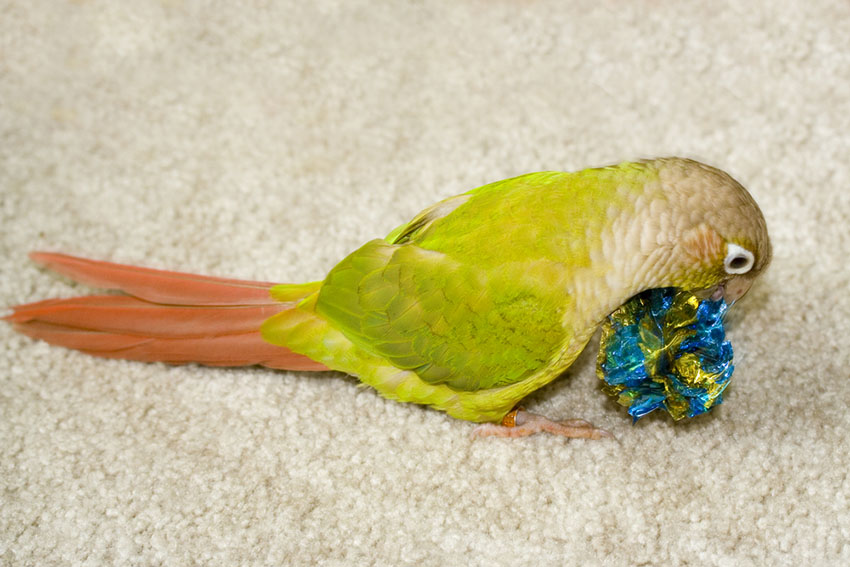
A Cinnamon green cheeked Conure having fun with a new toy
Chewing Toys
A single piece of chewable wood or an egg box are your starting points here. You can make things more interesting by threading pieces of egg box and balsa wood onto a string. A seagrass or wicker basket with parrot-friendly treasures inside is a good toy for destructive beaks too. Paper on a roll (kitchen or toilet roll for example) is a simple and fun toy. The paper will be pulled, unrolled, shredded and chewed.
Another satisfying variant is to wrap a present for your parrot in many layers of paper and cardboard. The prize inside could be an edible treat, or a ball for the bird to play with.
It’s best to avoid boxes that parrots can climb inside. Most of them panic if they feel the sides pressing against them.
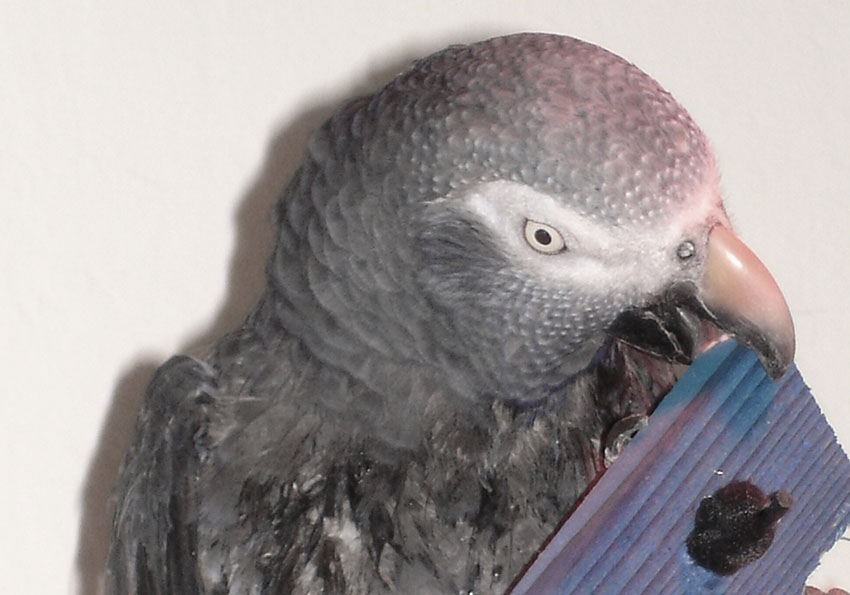
Parrots like this African Grey love to chew
Puzzle Toys
Anything that can be opened, pulled, twisted or turned counts as a puzzle toy. Many foraging toys (see below) have a dual function as puzzles. The simplest versions are sections of old lego, nuts and bolts, and knots. Pill-boxes or small plastic drawers (the kind you might keep buttons, pins and other small items in) provide lots of fun. They can be filled with nuts and other treats. You can use an old box or bag too, as long as it’s not made from anything toxic.
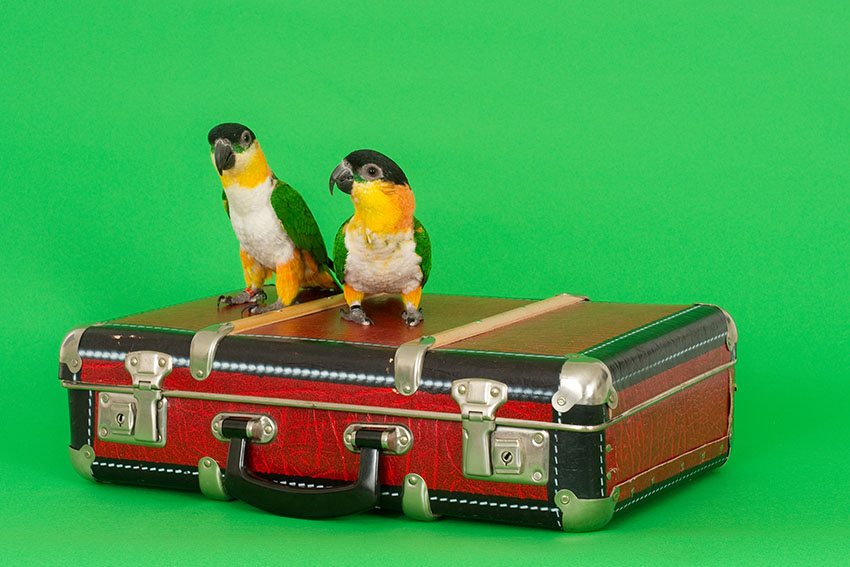
On the case - these Black-headed Caiques wonder what to do with this one
Foraging Toys
These are ones in which food has been hidden. They appeal to the birds’ instincts for searching for food in nooks and crannies. Twig or wicker balls stuffed with paper and bits of wood, concealing titbits of food, are one of the simplest ways of providing a foraging ball. You can also simply thread pieces of fruit, veg and ‘obstacles’ such as egg boxes and sticks, to a string or stainless steel skewer and hang it from the middle of the cage.
Another variation is to sew pockets onto a piece of towel or a sock. Fill all the holes with a mixture of food and interesting (but safe) objects, and the parrot will search until all the pockets are empty.
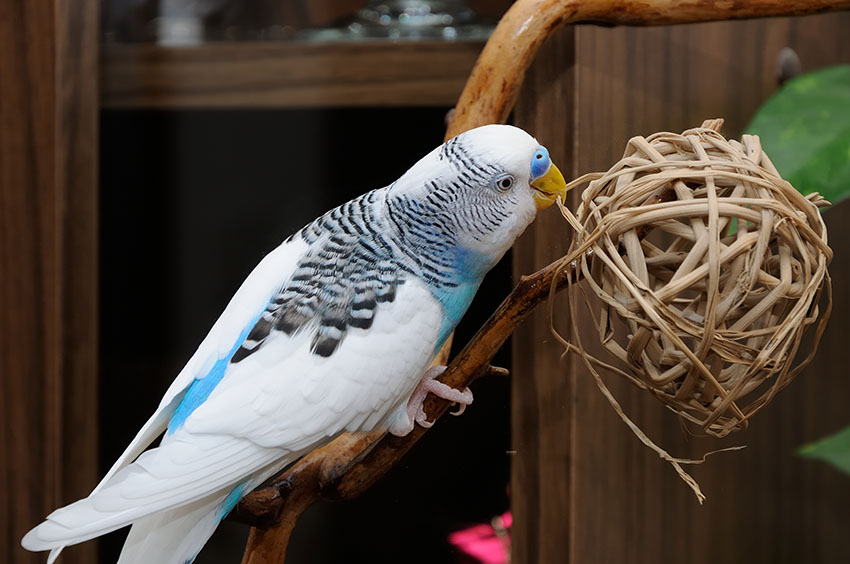
A twig ball will keep parrots occupied for hours
Foot and Beak Toys
Pieces of wood, leather, thick rope or safe children’s toys all count as good foot toys. Along with beaks, feet are a parrots means of exploring its environment, and interesting new textures on new objects will always hold his attention.
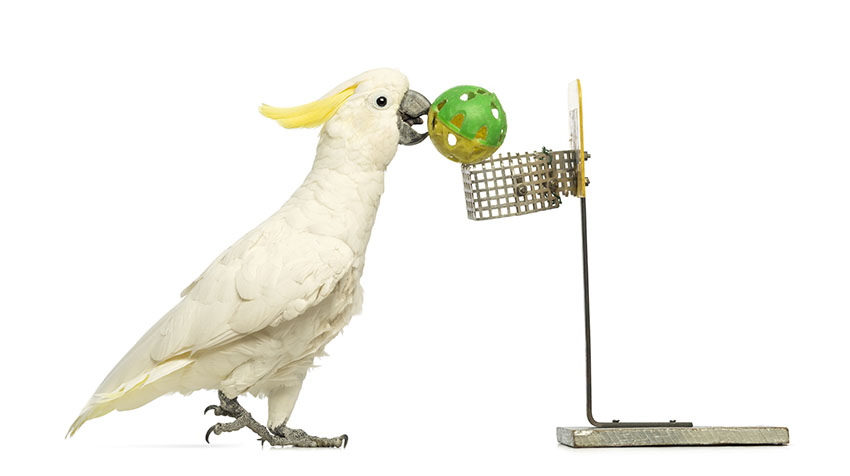
Sulphur-crested Cockatoos are great players
Bottle caps, plastic tubes, wicker or stick balls are the simple version; basketball nets and obstacle courses are the natural progression. If there’s something to grip and, even better, something to raise to the beak for further exploration, it will appeal to your parrot. Always make sure the materials are safe for birds and not coated in any toxic paint or chemical.
Noisy Toys
These are things like rattles and bells. Make your own by putting nuts or beads in plastic or wooden containers. Bottle tops on string work well too, for larger birds. You can also use old baby toys that include buttons that make a noise when pressed. Musical noises, rather than anything alarming, will go down best.
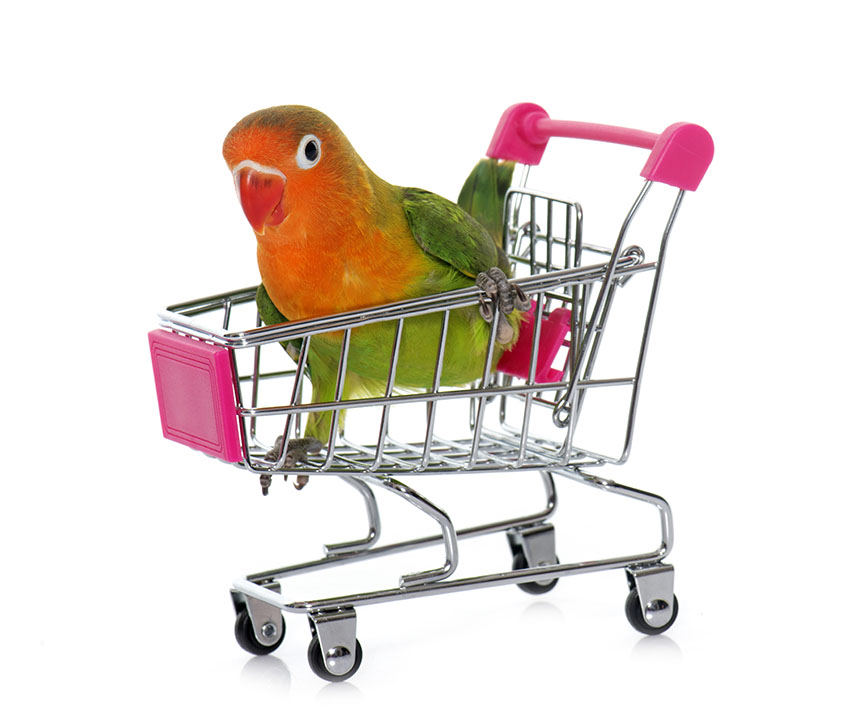
Fischers Lovebird on the move
Moving Toys
This wide category starts with ping pong balls and plastic bottle tops and ends with cars, bikes and ‘parrot trick’ toys. The birds enjoy the motion, whether they’re on board or simply pushing. With a little training they can learn to fetch and play ball as happily as a pet dog.
Comments
Graham, 25 August 2019
HI I'm Retiring from business in about 6 months & I would like to build a bird aviary & keep parrots. Because this is a new venture for me & I want to do it right so that the birds I keep will be well looked after. Could you recommend any books or DVD that I could buy before I venture into this hobby. I want to do it right first time & learn from others mistakes. I would be grateful for any help or advice Kind Regards Graham
Sean, 28 June 2019
Looking for new ways and what toys can i make or buy for my alexadrine parrot
Elaine, 25 April 2019
I noticed you mentioned till rolls in one section......parrots shouldn't be given these as they are treated with a heat reacting chemical!! Just thought I'd mention it x
Mango, 11 August 2018
Looking for more toy ideas for my birds